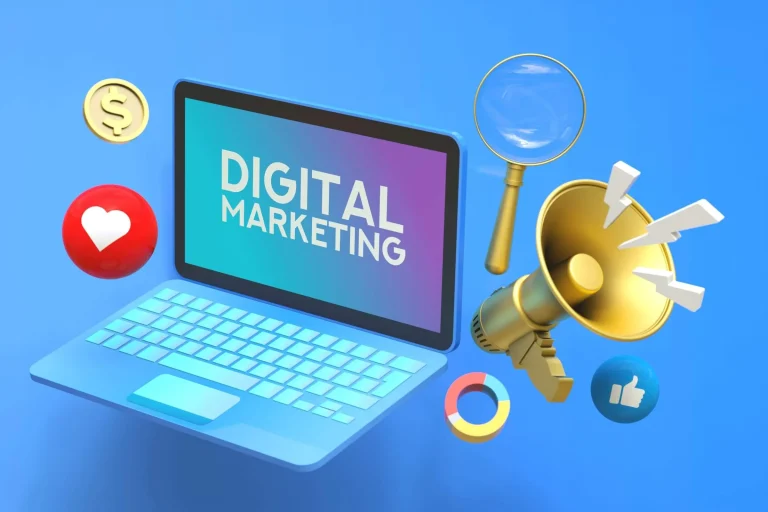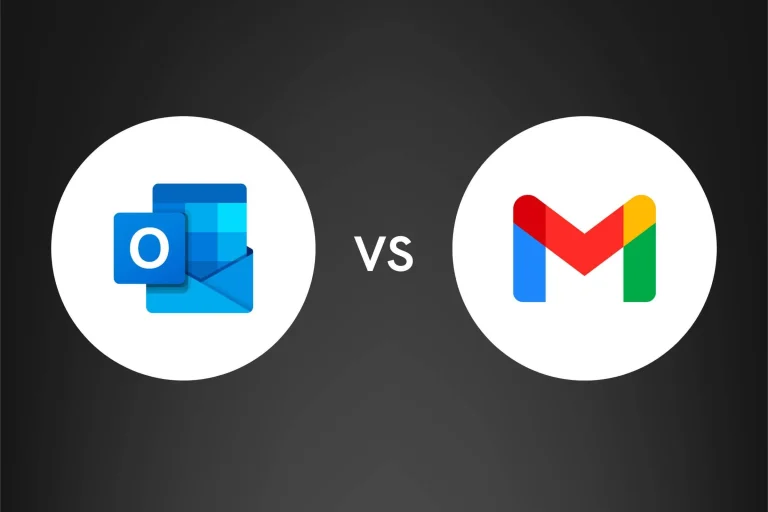If you are looking to expand your reach and be seen in more places online, then Social Media Marketing might just be the right move for you. This article will offer a comprehensive overview of what Social Media Marketing is and how you can get started on it. Read on to find out more about this powerful marketing strategy!
Introduction to Social Media Marketing
Social media marketing uses online platforms like Facebook, Tik Tok, Twitter, and LinkedIn to build relationships and interact with potential and current customers.
In its simplest form, social media marketing is a way to connect with your audience and promote your product or service through sharing content. This can be in the form of blog posts, images, infographics, videos, or even just status updates.
The key to social media marketing is building relationships. The more you engage with your audience, the more likely they will become customers. And once they’re customers, they’re more likely to continue doing business with you and recommend you to others.
There are a few things you should keep in mind when starting out with social media marketing:
Define your goals:
What do you want to achieve with social media marketing? More website traffic? More leads? More sales?
It’s important to have a clear understanding of what you hope to achieve through your social media marketing efforts. This will guide your strategy and help you determine what metrics you need to track to measure success. For example, if your goal is to increase website traffic, you may want to focus on creating and sharing content that drives clicks back to your site. On the other hand, if your goal is to generate more leads, you may want to focus on creating content that captures contact information from your target audience. Whatever your goals may be, it’s important to set them clearly and then tailor your social media strategy accordingly.
Identify your target audience:
Who are you trying to reach with your content?
Knowing your target audience is essential for creating effective social media marketing campaigns. Understanding who your audience is, what they’re interested in, and how they engage with social media will help you create content that resonates with them and drives the results you want. This information can be gathered through market research, customer surveys, and analysis of existing customer data.
Choose the right platform:
Where is your target audience?
With so many social media platforms to choose from, it’s important to select the ones that best fit your goals and target audience. For example, if your target audience is primarily visual learners, platforms like Instagram and Pinterest may be a good fit. If your target audience is more professional or business-focused, platforms like LinkedIn and Twitter may be better options. It’s also important to consider the specific features and capabilities of each platform and how they can be leveraged to achieve your marketing goals.
Create quality content:
If you want people to share your content, it needs to be good! Offer something valuable that people will want to read, watch, or share.
The quality of your content is critical to the success of your social media marketing efforts. Your content needs to be relevant, engaging, and provide value to your target audience. This can include a variety of formats such as blog posts, infographics, videos, and more. When creating content, keep in mind your target audience and what they’re looking for. The more your content resonates with them, the more likely they are to share it with their own network.
Measure your success:
Keep track of the results of your social media campaigns so you can see what’s working and what’s not.
Measuring the success of your social media marketing campaigns is crucial for continuous improvement. Keep track of key metrics such as website traffic, leads generated, and sales, and use this information to adjust your strategy as needed. You may also want to track engagement metrics such as likes, comments, and shares, to see how your content is resonating with your target audience. By continually monitoring and analyzing your results, you can make informed decisions about what’s working and what’s not, and make adjustments to optimize your social media marketing efforts.
Social media marketing is an important part of any digital marketing strategy and can be a powerful way to reach your target audience. For example, you can start building relationships and driving more business with a few simple steps with social media.
Benefits of Social Media Marketing
As a business owner or marketing professional, you may wonder if social media marketing is worth your time. After all, there are only so many hours in the day, and social media can be a huge time suck.
However, social media marketing can be an extremely effective way to reach your target audience and grow your business. Here are some of the benefits of social media marketing:
Increased visibility for your brand
Your brand becomes more visible online when you have a strong social media presence. This can lead to more traffic to your website and more customers for your business.
Improved search engine rankings
Social media signals are becoming increasingly important for search engine optimization (SEO). When you have a strong social media presence, your website is more likely to rank higher in search results.
More leads and sales
A well-executed social media marketing campaign can result in more leads and sales for your business.
Better customer engagement
Social media provides an opportunity to engage with your customers on a personal level. This can help build loyalty and trust between you and your customers, leading to repeat business down the road.
Greater insights into your target market
Social media gives you access to a wealth of data about your target market, including their demographics, interests, and buying habits. This information can be extremely valuable for developing future marketing strategies.
Different Platforms for Social Media Marketing
Social media marketing uses online platforms like Facebook, Twitter, and LinkedIn to build relationships and interact with potential and current customers.
The first step in social media marketing is to create a plan. This will help you determine which platforms you will use, what type of content you will share, and how often you will post. Once you have a plan in place, it’s time to start creating content.
When it comes to creating content, it’s important to remember that each platform has different guidelines. For example, images perform well on Instagram, but videos are more popular on YouTube. So keep this in mind as you create your content to maximize your reach.
Once you have some content created, it’s time to start sharing it with your audience. The best way to do this is through organic and paid promotion. Organic promotion involves sharing your content on your personal channels and in relevant groups or forums. Paid promotion allows you to reach a wider audience through ads and boosted posts.
The key to social media marketing is consistency. To see results, you need to post regularly and interact with your audience regularly. If you can do this, you’ll soon start seeing more leads and sales from your social media efforts!
How to Develop a Social Media Strategy
To develop an effective social media strategy, a few key points must be kept in mind. First, it is important to identify your goals and objectives for using social media. What do you hope to achieve by using social media? Once you know your goals, you can begin developing a strategy for best using social media to achieve those goals.
There are various ways to use social media, so it is important to consider which platforms will work best for you and your business. Do some research on each platform and determine which ones will be most beneficial for achieving your goals. Once you have selected the platforms you will use, create interesting and engaging content. Be sure to post regularly and interact with your audience as much as possible.
By following these tips, you can develop an effective social media strategy that will help you achieve your desired results.
Tips and Tricks for Effective Social Media Campaigns
- Keep your social media goals realistic and achievable. Don’t try to do too much at once – focus on one or two platforms that will work best for your business.
- Create compelling content that will engage your target audience. Think about what information or entertainment they would find valuable and shareworthy.
- Post regularly and be consistent with your messaging. This will keep your followers engaged and more likely to remember your brand when they see it pop up in their feeds.
- Use relevant hashtags to reach a wider audience and make it easier for people to find your content. Do some research to see which hashtags are being used most often in relation to your industry or niche.
- Take advantage of social media ads to boost the reach of your campaigns and target specific demographics with laser precision. Ads can be very effective if used correctly, but make sure you don’t overdo them or risk turning off potential customers.
- Track your campaigns and measure their performance. This will allow you to adjust your strategy based on what is working and what isn’t, as well as get feedback from your followers on how to improve.
Measuring the Impact of Social Media Marketing
As a business owner, you are always looking for ways to measure the impact of your marketing efforts. For example, when it comes to social media marketing, there are many metrics you can use to gauge its effectiveness.
Here are some key metrics to consider when evaluating the impact of your social media marketing:
- Engagement rate: This metric measures how often users interact with your content. A high engagement rate indicates that users find your content relevant and engaging.
- Reach: This metric measures how many people are seeing your content. A high reach indicates that users are widely seeing your content.
- Virality: This metric measures how often users share your content with their followers. A high virality rate indicates that users find your content valuable enough to share with others.
- Click-through rate: This metric measures how often users click on links in your content. A high click-through rate indicates that users find your content relevant and worth clicking on.
- Conversion rate: This metric measures how often users take a desired action after viewing your content, such as signing up for a newsletter or making a purchase. A high conversion rate indicates that users find your content valuable and relevant to their needs.
By monitoring these metrics, you can gain valuable insight into the impact of your social media marketing efforts. By understanding which strategies are working and which need improvement, you can refine and optimize your campaigns to maximize your ROI.
Alternatives to Social Media Marketing
There are many alternatives to social media marketing, each with its pros and cons. Here are some popular alternatives to consider:
- Traditional advertising: This includes print ads, TV commercials, radio ads, and other traditional forms of advertising. Pros: Reach a wide audience; can be very effective in certain industries. Cons: Can be expensive; not as targeted as social media marketing; can be interruptive.
- Content marketing: This involves creating and distributing helpful and interesting content (such as blog posts, infographics, ebooks, etc.) to attract attention and build trust with potential customers. Pros: Can be very effective in building an audience; relatively low-cost compared to other marketing channels. Cons: Requires a lot of time and effort to create quality content; may not reach as wide an audience as social media marketing.
- Email marketing: This involves sending emails to potential and current customers to promote your product or service. Pros: Can be highly targeted; relatively low-cost compared to other marketing channels. Cons: Requires a database of email addresses; can come across as spammy if not done correctly.
- Search engine optimization (SEO): This involves optimizing your website and content for the search engines so that you show up higher in search results when people are looking for products or services like yours. Pros: Can help you attract a lot of organic traffic; relatively low-cost compared to other marketing channels. Cons: Requires a lot of time and effort to get it right; may not be as effective in certain industries. Check our Beginner’s Guide to SEO: How to Optimize Your Website for Search Engines.
- Influencer marketing: involves partnering with influencers (people with large followers on social media) to promote your product or service. Pros: Can be very effective in building trust with potential customers; relatively low-cost compared to other marketing channels. Cons: It can be hard to find the right influencers; it may not reach as wide an audience as social media marketing.
Conclusion
Social media marketing has become invaluable for businesses of all sizes and industries. With the right strategy and a bit of patience, you can easily reach your target audience with minimal effort. It’s important to remember that social media is constantly changing and evolving, so it’s crucial to stay up-to-date on trends and adjust your strategies accordingly. By following the steps outlined in this guide, you should have everything you need to build a successful social media presence that will drive real results for your business.

















